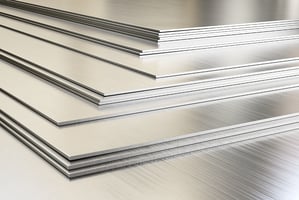The Raw Steels Monthly Metals Index (MMI) remained sideways, with a modest 0.32% increase from...
Rare Earths MMI: China’s Export Curbs Expose Supply Vulnerabilities
The Rare Earths MMI (Monthly Metals Index) broke its sideways trend and moved down by 4.06% month-over-month.

For decades, China has leveraged its commanding position to become the world’s foremost magnet factory. As a result, rare earth prices outside China have spiked dramatically. In October, Beijing doubled down on China’s existing rare earths restrictions, expanding export limitations to additional elements and even the equipment and technologies used to process them. Come December 1, foreign companies must secure licenses to export any product containing Chinese-sourced rare earth materials, a sweeping measure that could ripple across supply chains for industries like electronics, EVs, aerospace and defense. While these controls stop short of an outright ban, they nonetheless give China a powerful chokehold over rare earth distribution.

A map showing rare earth mine production by country in 2024. China’s output (over 270,000 metric tons) vastly exceeded that of the United States (45,000 tons) and other nations. Credit: abc.net.au
However, in a surprise twist, diplomacy yielded a temporary reprieve. After high-level talks, China agreed in November to suspend its new rare earth export licensing requirements for one year and issue provisional one-year licenses to smooth shipments. This olive branch served to ease immediate fears of supply seizures. European officials likewise established a “special channel” with Beijing to fast-track export permits after filing some 2,000 applications. So far, just over half have been approved.
U.S. Accelerates Domestic Rare Earth Investments
Facing these vulnerabilities, the United States has responded with an unprecedented industrial push to construct an end-to-end rare earth supply chain at home (or at least among allies). In the past year, Washington has marshaled funding, policy support and public-private partnerships at a pace unthinkable just a few years ago. In early November, the U.S. government unveiled a $1.4 billion public-private initiative aimed at jump-starting domestic rare earth magnet production.

The headline deal will see North Carolina–based Vulcan Elements construct a 10,000 metric-ton-per-year Neodymium-Iron-Boron (NdFeB) magnet factory, all backed by a $620 million low-interest Pentagon loan and a $50 million equity stake from the Commerce Department. Private investors are chipping in the rest. Meanwhile, partner firm ReElement Technologies has secured $80 million in Strategic Capital loans to expand its rare earth separation and recycling facilities, ensuring the new magnet plant has adequate feedstock.
Another aspect of the U.S. strategy is financing critical raw material supply abroad to reduce dependence on China. For instance, the U.S. International Development Finance Corp (DFC) just approved up to $465 million in funding for Brazil’s Serra Verde rare earth mine. Perhaps most importantly, several U.S.-based companies are racing to fill the processing and refining gap, especially for the heavy rare earths targeted by China’s export curbs.
Allies and Competitors: A Global Scramble for Supply Chain Security
The United States is not alone in this rare earths sprint. Allied countries are also flexing their industrial policy muscles to ensure access to these strategic materials. Canada, for instance, has poured funding into rare earth separation projects while also teaming up with the U.S. on cross-border supply chains. In fact, Canada’s government just provided C$36 million to support Ucore’s Ontario refinery, complementing U.S. incentives for the firm's U.S. facility.

Japan has also been proactive. The country recently partnered with the U.S. to explore deep-sea rare earth deposits in the Pacific, an ambitious attempt to tap undersea muds that could contain hundreds of years’ worth of rare earth demand. While deep-sea mining remains both experimental and controversial, the Japan-U.S. project highlights the lengths to which nations will go to diversify supply, including looking 6,000 meters under the ocean.
Outlook: New Options for U.S. Buyers
From a U.S. business perspective, these developments carry a mix of encouragement and caution. On the one hand, American companies sourcing rare earths can look forward to more non-Chinese options becoming available. However, in the short term, supply security comes at a price. Non-Chinese rare earth materials typically command a hefty premium in today’s market. Many are locking into long-term contracts with novel terms.
For instance, at least one U.S. deal included price floors near $110/kg for NdPr (neodymium-praseodymium) oxide, nearly double the current Chinese price. These contracts often include take-or-pay clauses to guarantee volume, reflecting the reality of a seller’s market for any non-China supply. For CFOs, this means budgeting for potentially higher raw material costs in exchange for reliability and ESG assurance.
Ultimately, risk mitigation may justify the cost. This year has proven that a single policy move from Beijing can send non-Chinese magnet prices skyrocketing and even halt production lines. Many U.S. customers are deciding that it is better to pay more for a guaranteed supply than to be caught flat-footed by the next export restriction.
Rare Earths MMI: Noteworthy Price Shifts
- Neodymium prices dropped by 10.5% to $95,654.94 per metric ton.
- Terbium oxide prices dropped by 6.15% to $925.01 per kilogram.
- Yttrium prices moved sideways, rising a slight 1.7% to $30.51 per kilogram.
- Lastly, cerium oxide prices rose by 3.01% to $1,620 per metric ton.

